The Ultimate Guide to Google Ads

What Is Google Ads? How Does Google Ads Work?
Google Ads (formerly Google AdWords) is so much more than those little paid ads at the top of a search results page—although that’s how most of us might recognize it:

Admittedly, the online advertising industry is known for being a bit cryptic to the average person.
So if you keep hearing about “PPC advertising” or “Google Ads” and just want to understand what the heck these things mean—this guide is here to help.
No shame in learning (or relearning) the basics, my friend.
Let’s Go!
Part One – The Basics: PPC and The Google Network
Part Two – What Is Google Ads?
Part Three – How Google Ads Work
Part One
The Basics: PPC and The Google Network
Google Ads (formerly Google AdWords) is a form of pay per click advertising (PPC).
Quick Refresher! What Is PPC Advertising?
PPC is one of the many flavors of online advertising out there (other flavors include social media marketing, search engine optimization, and email marketing).
When we ask a search engine (like Google, Bing, or Yahoo) a question, ads typically appear at the top of the results page (sometimes the bottom or the side of the page, too):
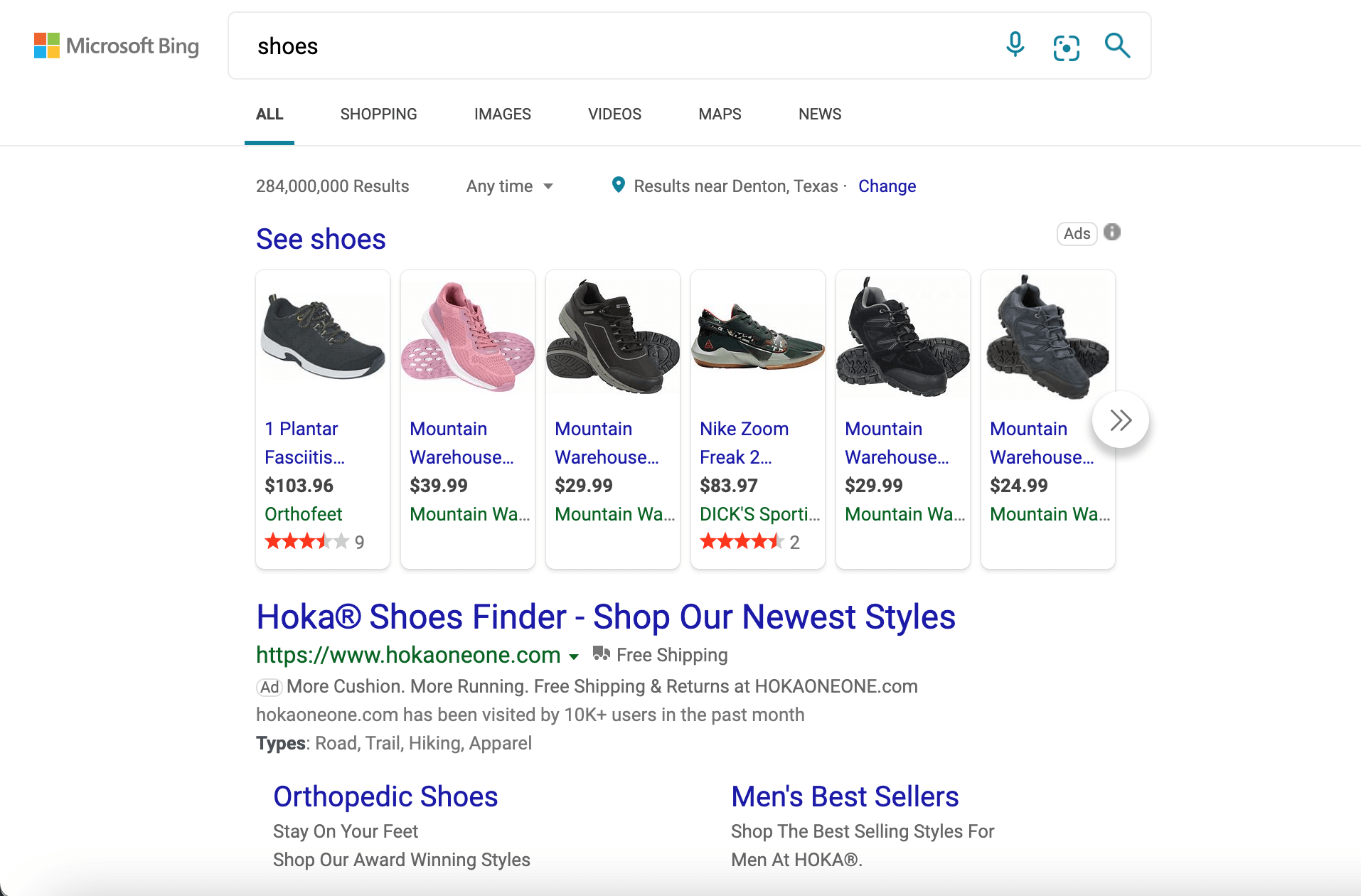
These ads are built to look just like a search result by the advertiser.
And the advertiser only pays a fee (to the search engine) if the ad is clicked.
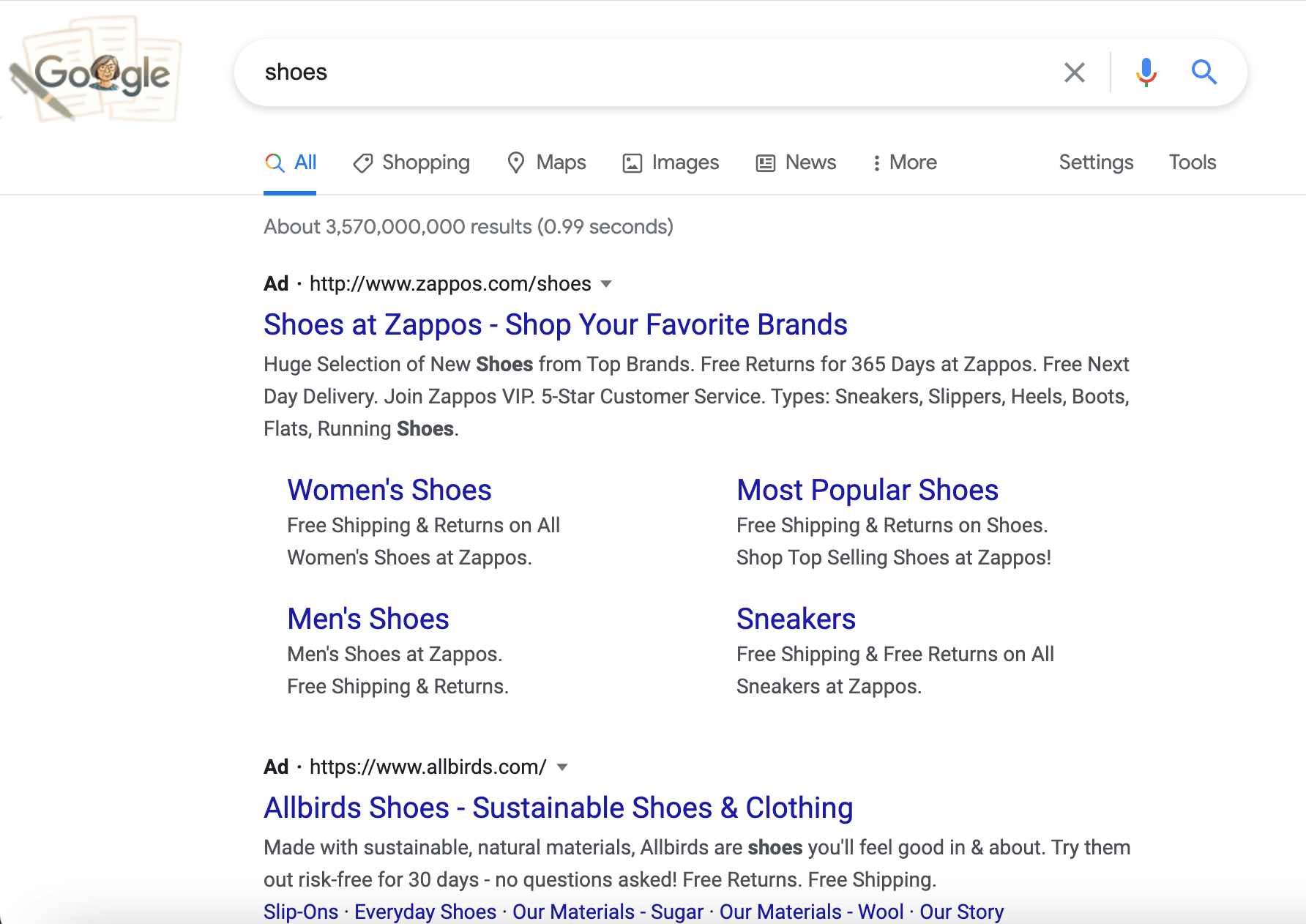
…But PPC ads are also those pesky ads that play before watching your favorite cat video:
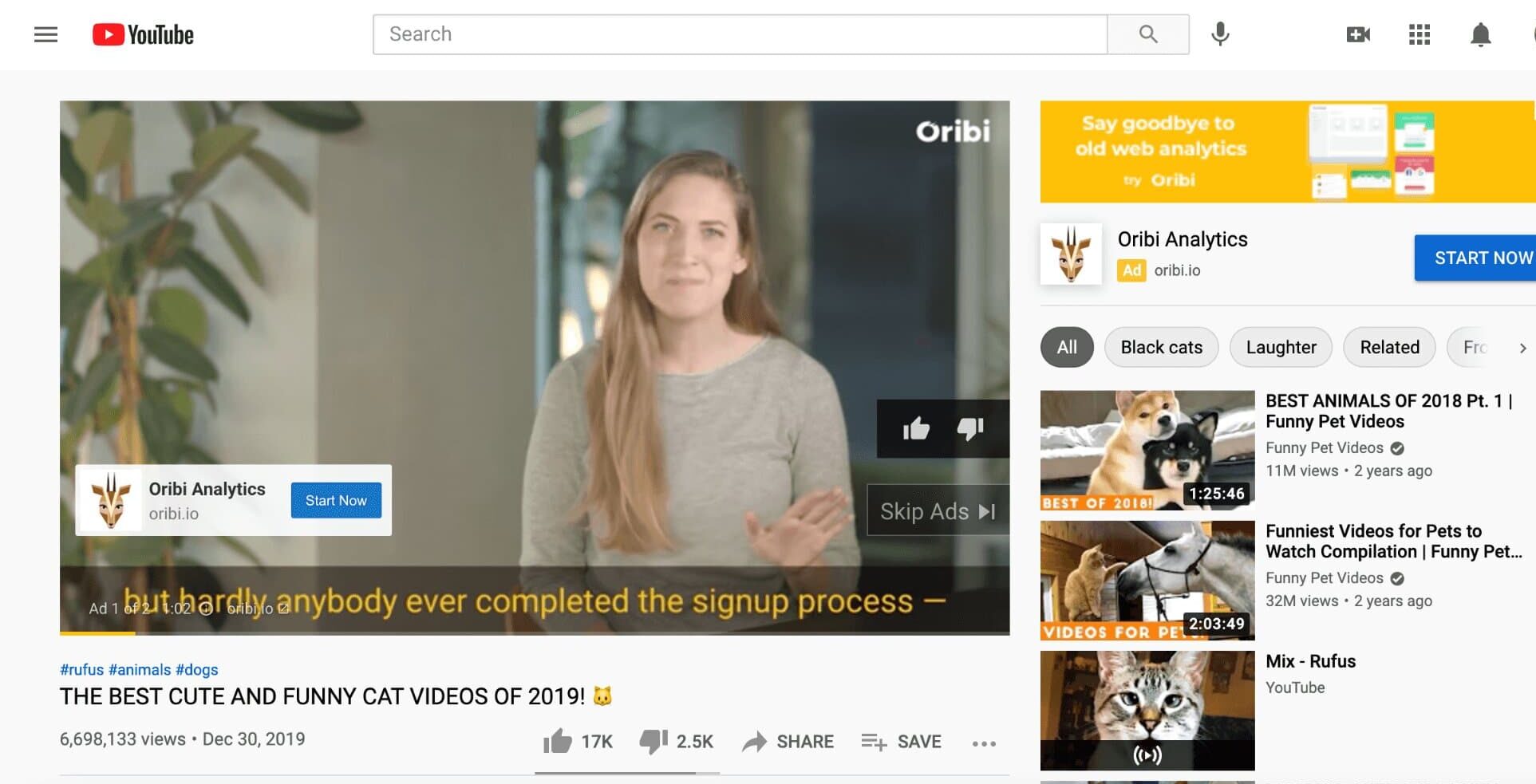
And, PPC ads are also those ads for cotton tank tops following you everywhere since you browsed Pact’s online sale the other day.
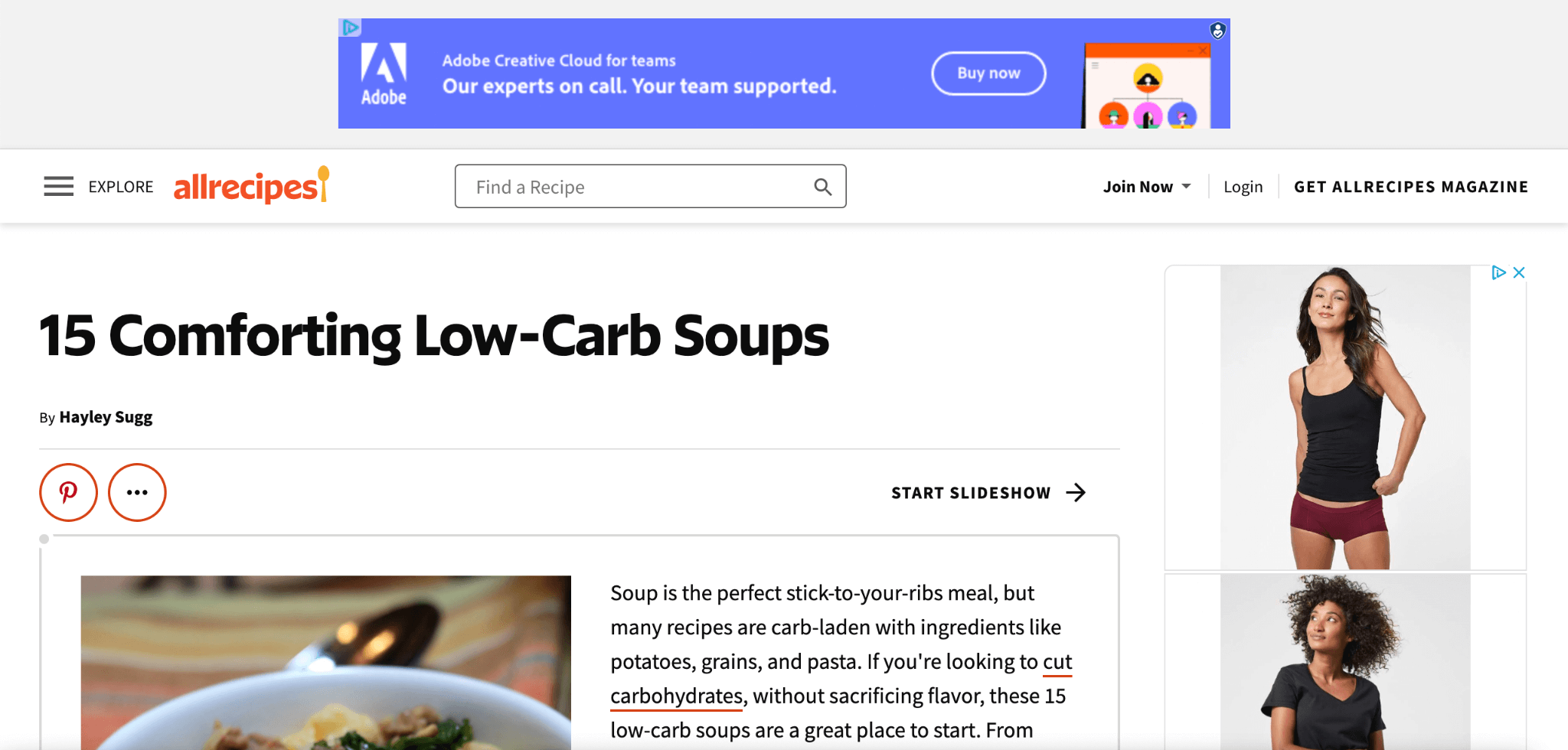
…But PPC can also refer to those ads you see while doom-scrolling on social media.
Confused yet? Don’t sweat it:
TL;DR
- PPC advertising = pay per click advertising (advertisers only pay if their ad is clicked)
- PPC advertising = paid ads that appear online via search engine result pages, videos, apps, websites, and social media
- PPC is effective because it reaches out to prospects who have already shown interest
Now, Back to Google Ads:
The #1 PPC Advertising System on the Planet
So, hopefully, we convinced you that PPC advertising prevails in the digital world of marketing.
But let’s get…nichey-er.
There are several platforms under the umbrella of PPC advertising: Bing, Yahoo, Microsoft Ads, Reddit—remember, even social platforms’ advertising is considered PPC (think of those ads you see on Facebook, Instagram, LinkedIn, Twitter, or Pinterest).
Obviously, this guide will focus on Google and Google Ads (formerly Google AdWords) specifically.
And you should, too.
Hot take? Not really.
Look, to understand why Google Ads (AdWords) the #1 PPC advertising system on the planet—it’s important to understand Google itself and the vastness of this network.
What Is Google?
Bear with us for a minute:
Google is like a librarian.
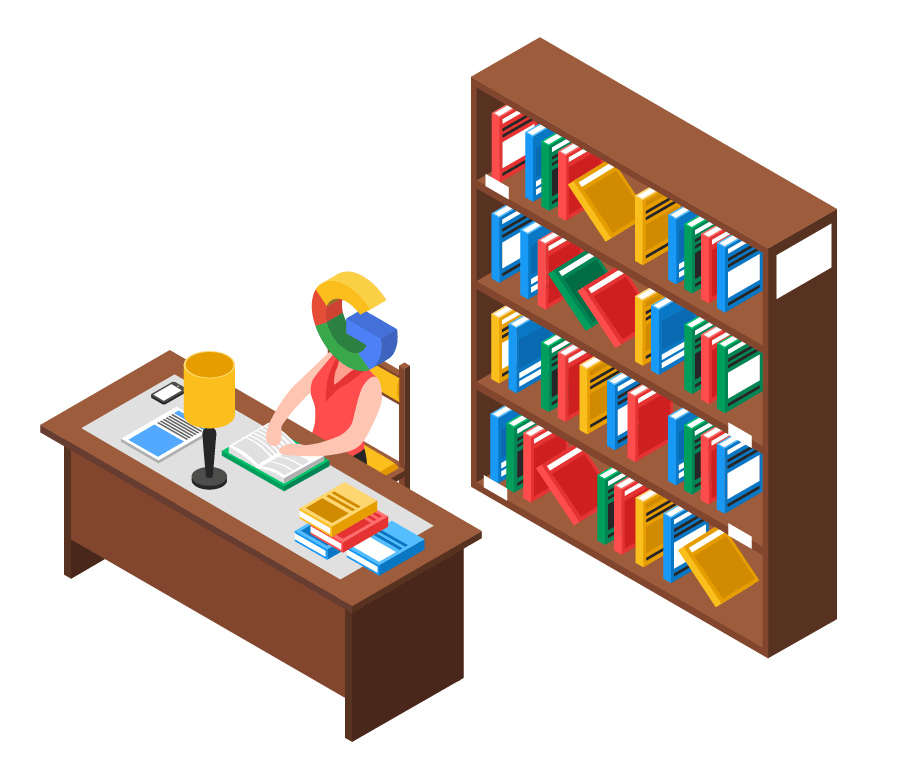
The librarian (Google) works inside a library (the internet).
Now, there are a ton of books and videos and old newspapers and magazines inside that building. Basically, every resource that exists, good and bad.
And the librarian’s primary job is to collect and sort each book and resource inside the library.
So, when a reader (internet user) visits the library, the librarian (Google) can personally help them find the best possible resource for what they need.
This “librarian” is also a little nosey.
…like, follows you around the library nosey.
The truth is, Google tracks everything you click, search, and browse.
Then, it uses that information to build your user “profile.”
So, with our library analogy, the librarian is pretty observant as soon as you walk through the door: taking note of how old you are, what you’re wearing, if you came in with kids or if you’re wearing a wedding band…
They look up your checkout history, what kind of books you’ve taken out before, how often you visit, and if you mentioned liking (or disliking) a particular author…
Creepy? Yes. But, well intentioned.
Here’s what we mean:
Google’s number one priority is relevancy.
Google’s job as the “internet librarian” is to provide the most helpful, custom-tailored search results for its users.
TL;DR
- Google Ads is the #1 PPC advertising platform on the planet
- Google’s main job as “librarian of the internet” is to collect and organize every online resource and offer the best ones in order, according to your search (this includes ads)
- Google takes your personal information into account to offer these relevant resources
The Google Network: Much More Than a Search Engine
Okay, we tend to think of Google as the search engine, right?
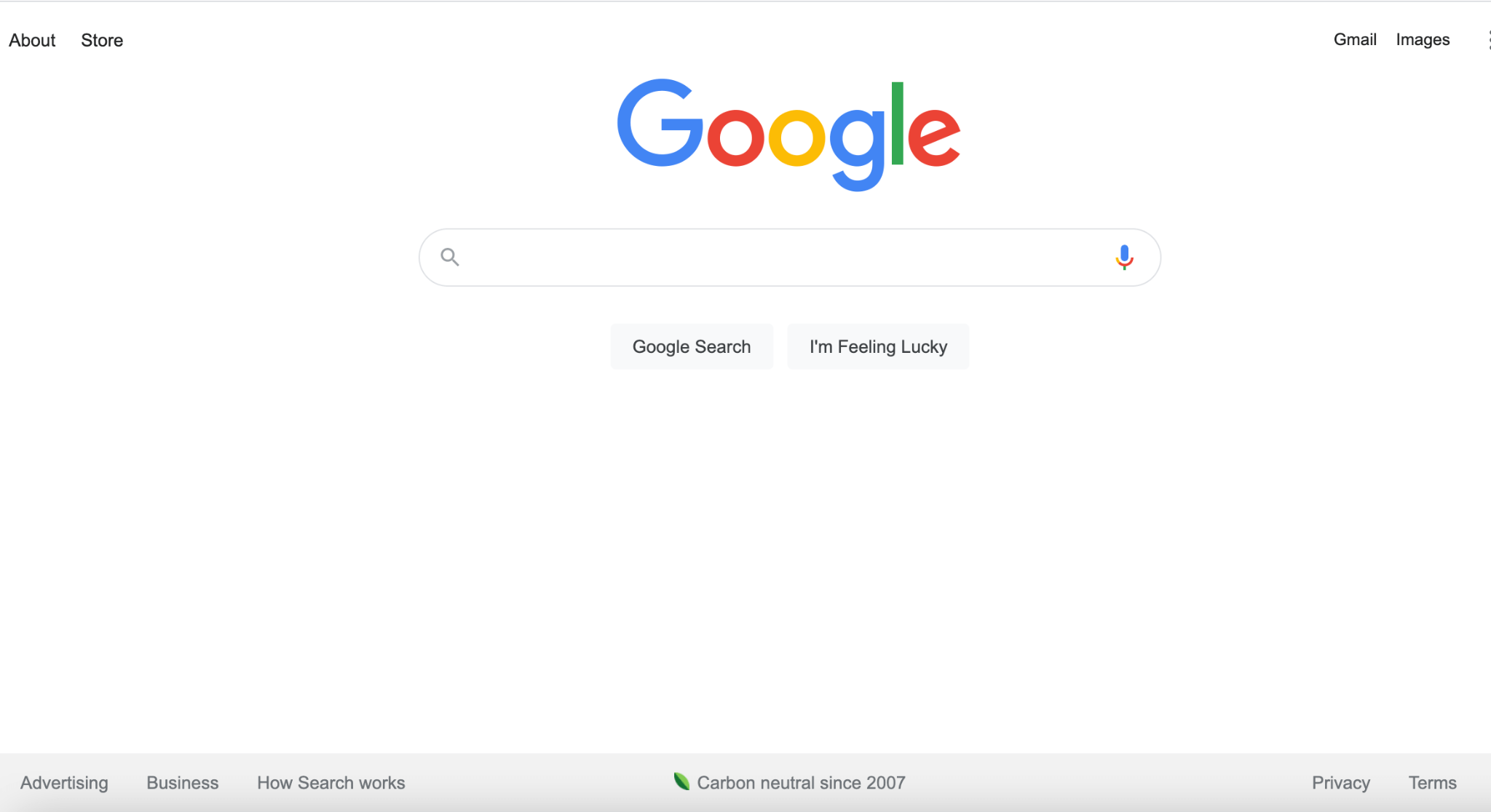
But the truth is that Google’s ecosystem is massive and includes:
- YouTube
- Gmail
- Apps (think Google Calendar)
- Google Maps
- Android
- The Google Display Network
- Google Analytics
Before we go further, let’s meditate on something:
Google is the closest thing to AI that is publicly available today.
It’s a machine that thinks.
We’ve been trained to turn to Google with every question we have. Your Google search history is one of the most intimate insights into who you are, which gives Google a chance to know you on a deeper level than you might even know yourself.
Now, we all know that Google learns a lot about you from your searches from good ol’ Google.com.
But each limb of the Google ecosystem also learns a lot about you by design.
Let’s take a look:
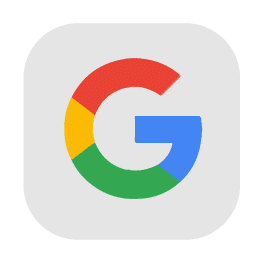
Google Search
We use Google search to answer our questions and find our “wants.” From these searches, Google knows:
- What you want
- What you’re afraid of
- What you don’t know
- What problems you have
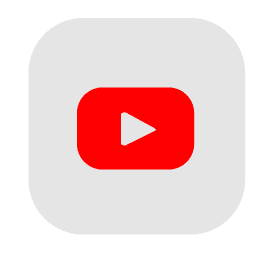
YouTube
Google’s closest competitor is its own entity: YouTube. Now think about how you use YouTube to search. How to fix a leaky faucet. At-home workouts. Music videos from the ‘90s. This is all intimate insight into:
- When you’re slacking off
- What you want to learn
- What you love and hate
- When you’re vulnerable
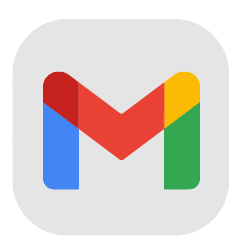
Gmail
Even if you don’t have a Gmail account, Google collects information from the conversations you have with people who do. Think about the emails you send and receive. Through Gmail, Google knows:
- How productive you are
- When you work
- Who you communicate with and in what context
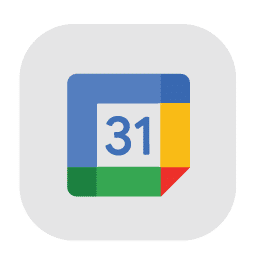 Apps
Apps
Google’s apps (like Google Calendar) knows:
- What you store on your devices
- Your schedule
- What you and your loved ones look like (seriously)
- Who you meet
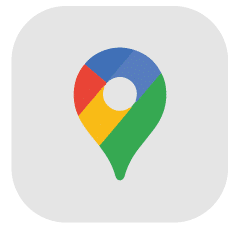
Maps
Everytime you look up directions to a friend’s house, a store, a cross-country destination, Google learns:
- Where you live
- Where you work
- Where you go to eat, play, shop
- If you speed when you drive(!)

Android
If you have an Android phone (or communicate with someone who does), surprise! Google knows:
- Who you call
- Who calls you
- Who you ignore
- When you lie (“Hey, Mom! I’m on my way!”)
TL;DR
- Google is more than a search engine, it is also YouTube, email, apps (like Google Calendar), Google Maps, and Android
- Google is everywhere and knows everything (only about 4% kidding here)
- Google collects information about you and your life and therefore:
- …Google can predict intent—which means it can put somebody who’s willing to buy your product in front of your ad before the user even knows they want to buy
In short, Google is the world’s most powerful data acquisition machine. It’s a trillion-dollar tool that everyone uses for free.
So, if it’s free, how does it generate revenue?
See: Google Ads.
Part Two
What Is Google Ads?
Google Ads is Google’s advertising platform.
Descriptive, eh?
As we mentioned in Part One, the easiest way for most people to recognize Google Ads is by those results at the top of a Google search results page, branded with a small [AD] box:

And while this is a perfectly fine explanation of Google Ads, it’s actually only one form of Google Ads, specifically Google Search Ads.
The Different Types of Google Ads
(i.e. Campaign Types)
When you advertise your product or service through Google, you aren’t limited to those search engine advertisements (referred to as “Search Campaigns”), although they are arguably the best place to start.
Remember how vast the Google network is?
For every piece of “real estate” owned by Google (email, search engines, YouTube, apps) there is a way to advertise.
Let’s explain the different types of Google Ads campaigns:
Google Search Campaigns

This is the campaign we generally refer to when we talk about Google Ads.
Again, you’ll recognize these ads as the first results that pop up on the top of a Google search results page:
Google Shopping Campaigns
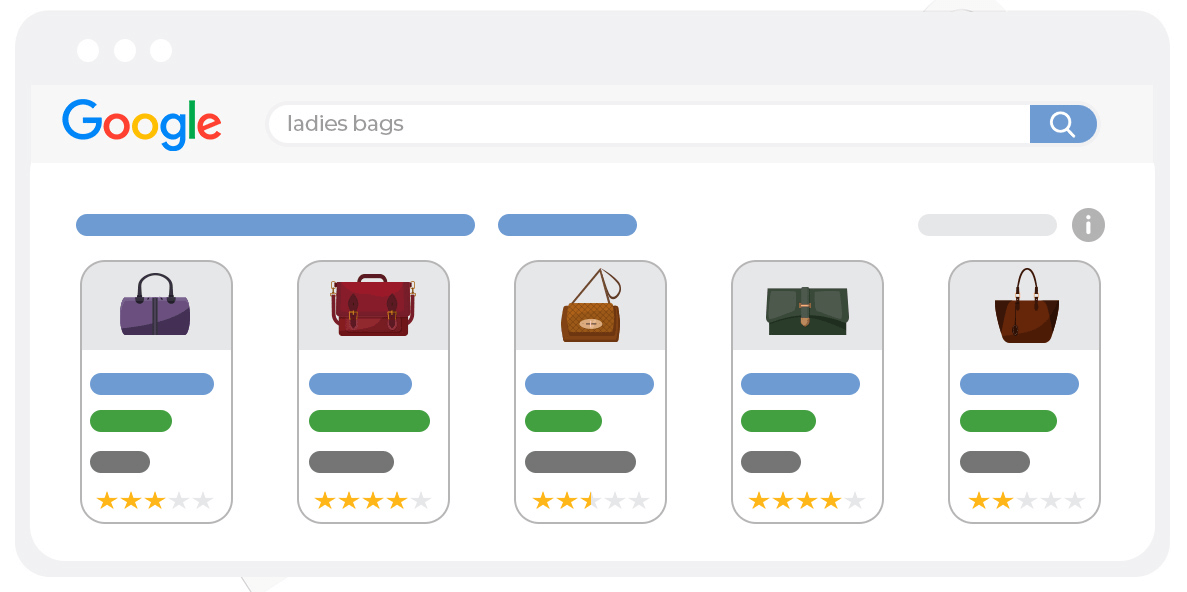
This campaign type exists inside Google’s shopping ecosystem but can also be expanded to Smart Shopping and other types of responsive display ads.
Google Display Campaigns
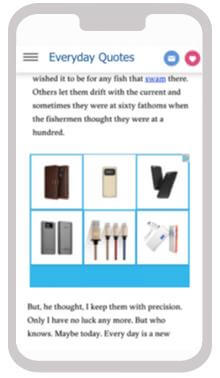
Let’s say you want to find a new recipe for dinner tonight, so you go to your favorite cooking website for some inspiration. Chances are, somewhere around the border of the page, you’ll see a display ad. These websites that allow advertisements to take up space on their pages are paid for each click or impression, and the advertiser is able to target their audience. The ads are usually an image (see: “display”) like this:
This is a good way to think of display ads:
These websites are the landlords.
Google is the realtor.
The advertisers are the tenants.
Video Campaigns
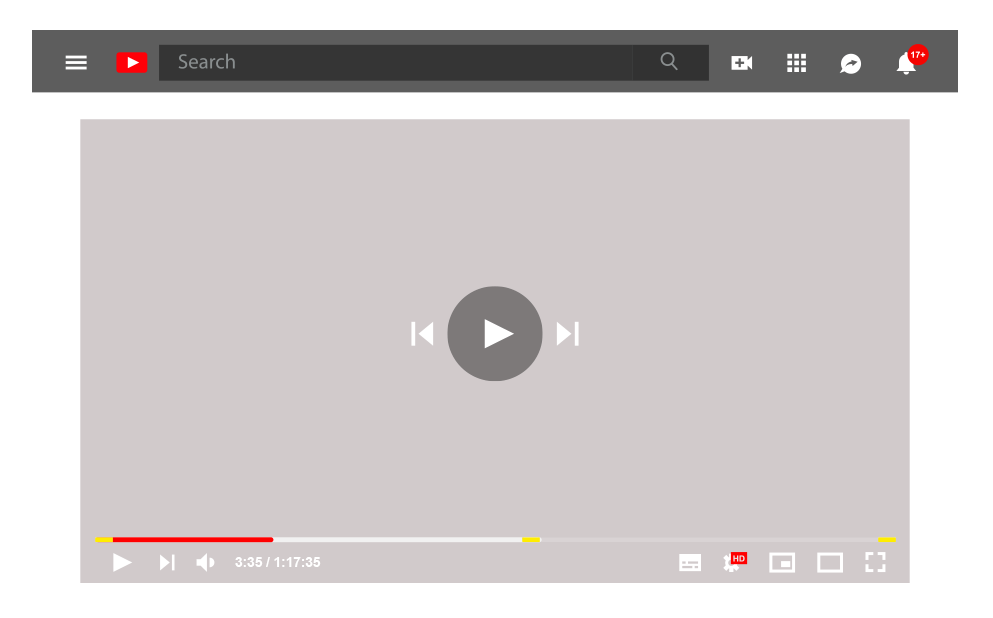
The second largest search engine on the planet is YouTube. You can make video ads that pop up before, after, or in the middle of a YouTube video.
These video ads can also appear at the top of a YouTube search:

But! Video campaigns are not just for YouTube. These types of ads can appear through Google display network (see above) and other areas of Google’s ecosystem.
App Campaigns
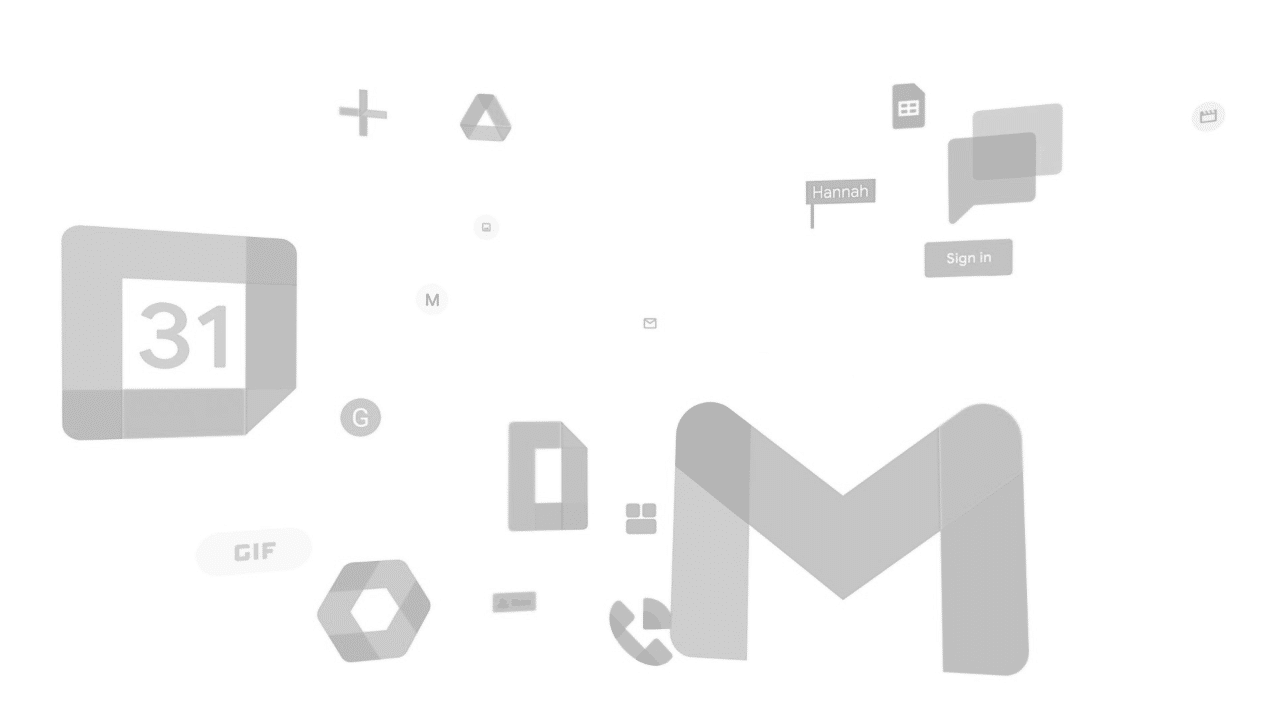
Promote your app across Google’s networks, including Google Search, Display, YouTube, and Google Play (the app, game, ebook, and general entertainment store for Android devices).
Google Smart Campaigns

Algorithmically controlled automated ads on Google and across the web.
Google Discovery Campaigns
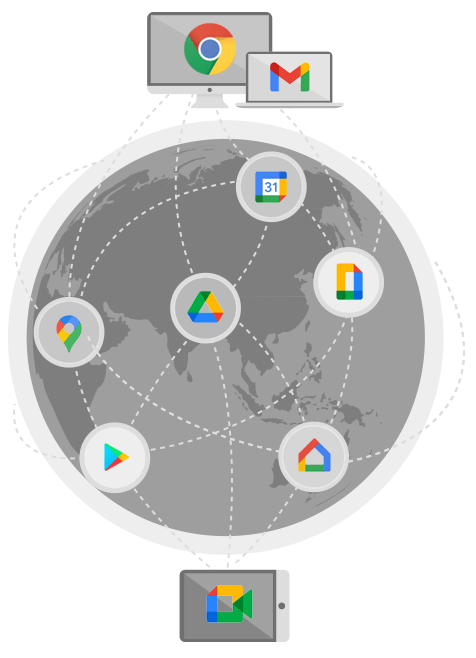
Google (Search) Ads:
Our Favorite Campaign-Type
Why?
Well, Google search is the strongest indicator of ~intent~
While all Google Ads campaign types have their place, we recommend using search first.
See, when somebody is ready to buy a product or a service, what do they do?
Google it.
How the Google Search Ad Network Works
For the rest of this guide, we will primarily focus on Google search ads.
This campaign type are the (up to four) ads that land at the top of the search results page. While these are marked with a subtle “Ad” tag, Google really prioritizes ads over organic results.
*Reminder: Paid Vs. Organic *
Paid search results = Ads that appear on the Google search results page.
Organic search results = All other search results that are not advertisements.
Whether organic or paid, however, Google values relevance over all.
In fact, if your paid ad is more relevant to the search, you will rank higher (meaning your ad will appear in one of those top slots) and pay less for a click.
This is Google’s way of getting their user base to trust them.
And, even if you think you never click on the paid results—the data shows otherwise.
In fact, 67% of all high commercial intent keyphrases go to a paid ad.
We’ll reiterate:
When someone wants to buy, two out of three(!) of those Google searches result in clicking on an ad.
That tells us that when people are in the learning phase of the buying process, they go for organic search results.
But when they are ready to buy—customers click the ads.
TL;DR
- For every piece of “real estate” owned by Google (email, search engines, YouTube, apps) there is a way to advertise (i.e. a campaign type)
- While all Google Ads campaign types have their place, we recommend using search first (the ads at the top of a Google search results page), as Google search is the strongest indicator of intent
- Paid search results = Ads that appear on the Google search results page
- Organic search results = All other search results that are not advertisements
- If your paid ad is more relevant to the search, you will rank higher (meaning your ad will appear in one of those top slots) and pay less for a click
- 67% of all high commercial intent keyphrases go to a paid ad (i.e. Google Ads lead to sales)
Before Part Three
Helpful Terms to Understand Google Ads
Account
A Google Ads account is “homebase” for your business’s online ads, settings, and personal information. If you have a Google account (i.e. a Gmail account), you can create a Google Ads account for free.
Your Google account is where you’ll create your ads, make payments, and review your data.
For the purpose of this exercise, we’ll pretend that our Google Ads account is for a shoe store.
Campaign
A campaign is made up of a bunch of ads, organized into groups—all of which share a budget (as well as other settings).
There are different ways to advertise through Google (on their search engine or on YouTube, for example), so different “locations” or types of ads within the Google network require different campaigns.
Campaigns are often used to organize categories of products or services that you offer.
So, continuing our example from above:
Our shoe store business has a Google Ads account.
Inside that account, we have two search campaigns:
- One for men’s shoes.
- One for women’s shoes.
Ad Group
A way of organizing ads into categories inside a campaign.
Each ad group shares the same keywords and budget to promote a product or service. So, for our campaign for men’s shoes, we might create ad groups for:
- Men’s running shoes
- Men’s sandals
- Men’s slippers
Keywords
Keywords are like labels.
We use them to categorize our ads (i.e. ad groups), craft our ads, include them in the copy of our landing pages (the page of your site that your ad directs the user to) and let Google know when we want our ad to appear on the search engine results page (SERP) through something called the Google Ads auction (explained in a moment).
These keyphrases range from product/service descriptions (example: red shoes), brand name (example: shoe store brand name or a specific shoe brand), geographic location (example: Chicago shoe store), and questions the user asks about a problem the business solves (example: how to find the right shoe fit).
Ad Rank
Google’s calculation that determines where your ad will be shown on a results page, relative to other ads ( ad position).
Although ad rank is calculated by factors such as bid amount, the competitiveness of the auction, quality of ad and landing page, the profile of the Google user (geographic location, device, time of search, past searches), and the ad rank thresholds (your ability to compete in an ad auction)—this score is recalculated every time an ad is eligible to appear on a search results page; therefore, ad rank will fluctuate (and remains unknown to the advertiser).
Quality Score
The quality of your ad, according to its relevance (including the relevance of the site it links to), measured on a scale from 1-10.
This score is determined by:
- Expected click-through rate (CTR) – prediction of how often your ad will be clicked, based on data gathered by Google from every search query
- Ad relevance – whether the language of your ad matches the keyword
- Landing page – the page your ad takes the user to should not only match the search query, it should be easy to navigate, full of original content, help the user find what they’re looking for, and fulfill what the ad claims to offer
This score is based on data from exact searches for your keyword. Quality score can be monitored in your account under “Keywords.”
Ad Extensions
Extra information about your business you can tack onto your ad, including your address, phone number, direct page links, coupons, or even additional websites. Extensions show up in blue below your primary ad copy.
Landing Page
The page your ad directs the user to after they click. This page should be easy to navigate and should match the ad (fulfill the promise made to the user).
Part Three
How Google Ads Work

Google Ads is made possible by three groups:
1. The Googler
Enters a keyphrase into “the Google machine.”
2. The Advertiser
Creates ads and bids on keyphrases that have to do with their product or service in hopes that they will appear at the top of the search results.
3. The Google Machine
Processes the Googler’s query, as well as specific information about that user (like how old they are, what other searches they made recently, where they live, etc.) Using that information, Google matches the search with all the advertisers who are bidding on that search term.
The highest ranked advertisers appear in order of ad rank.
Let’s back up for a second to talk about the “bid.”
How Ads Appear: The Google Ads Auction
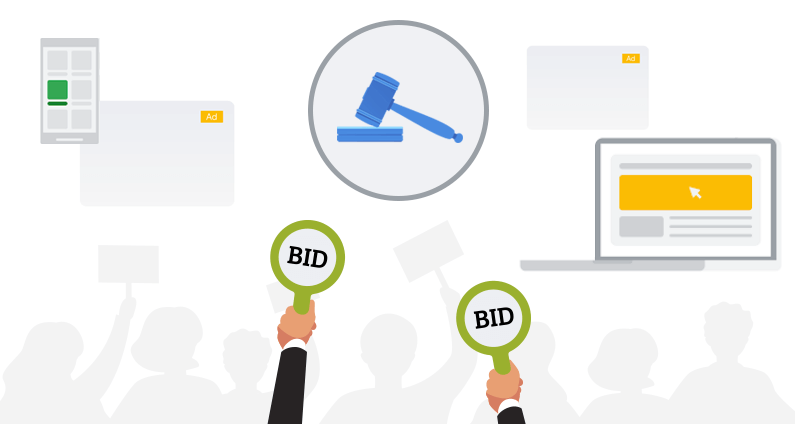
The Google search results page has a limited number of spaces available for ads.
So, let’s say there is a group of advertisers competing for the same search term, “red shoes.”
Each advertiser has created an ad around the keyword “red shoes,” and placed a bid—essentially telling Google how much they are willing to pay if a user clicks.
Now, you might think the advertisers who offered up more money are automatically given the top four-or-so slots at the top of the search results page.
But it’s a bit more complicated than that—and for good reason.
Ad Rank: How to “Win” the Ads Auction
(i.e. Make Your Ad Appear)
How much you bid on your ad is only one of several factors Google takes into account when determining ad rank (who earns which spot at the top of a search).
The quality of your ad is another key factor, along with the expected impact of ad extensions.
Bid = The maximum amount of money you’re willing to pay for a user clicking on your ad
Quality = The usefulness of your ad and the site it links to, according to the user’s search
Ad Extensions = When you created your ad, you have the opportunity to include additional information (like a phone number), referred to as ad extensions. If you don’t have any ad extensions, you will have no extensions impact. If you are only eligible for one extension, you will have a low extensions impact. But if you are eligible for many extensions (so, you include direct page links, a phone number, and address in your ad, for example), you will have a high extensions impact.
Additionally, Google calculates other factors such as the competitiveness of the auction, the ad rank thresholds (your ability to compete in an ad auction), and who the user is (based on things like geographic location, device, and past searches).
In other words, the more likely Google thinks a particular user will engage with your ad, the higher your ad rank will be; but this can change from user to user depending on relevance.
*Brain explodes*
Yeah. So, there is no way to know your ad rank because this measurement is recalculated every time your ad competes in an auction.
But, as we mentioned above, Google gives us some indications into what is included in the ad rank:
- Your bid (How much you’re willing to pay for the click)
- The quality of your ads and landing pages (well written ads, relevant landing pages, interesting content, consistent offers)
- Competitiveness of an auction
- The context of the search
- The expected impact from your ad extensions and other ad formats
TL;DR
- Google Ads is made possible by 1) the Googler, 2) the advertiser, 3) the Google Machine
- Advertisers must bid on relevant keywords for ad to appear in the search results page
- Bidding more does not necessarily increase your ad’s likelihood of appearing—this is calculated by ad rank
- There is no way to know your ad rank because this measurement is recalculated every time your ad competes in an auction
- Some indicators into what determines ad rank: bid, quality of your ads and landing pages, competitiveness of an auction, context of the search, expected impact from your ad extensions and other ad formats
The Auction in Action
So, let’s go back to our group of advertisers who bid on the keyphrase “red shoes.”
As soon as a user enters that search term, Google:
- Does an inventory on every advertiser who bid on the keyphrase “red shoes”
- How much they are willing to pay for a click
- The quality of their ad
- The quality of their landing page
- Whether or not the ad includes extensions
In less than a second, Google fills those slots with the top ranking ads on the search results page.
Just Because You’re Willing to Pay More, Doesn’t Mean You Will
The more quality you bring to the table, the less you pay and the higher you rank.
See, this is where things get even more interesting with the Google Ads auction:
The highest bidder may win the bid, but only pays the second highest bidder’s price.
This is brilliant because it means advertisers are bidding for the value of the click, instead of bidding against each other.


Quality Score
We may not have access to our ad rank, but Google does provide us with our own system of measurement: quality score.
Here’s the thing:
Quality score is the grade Google gives your ad, according to its relevance (including the relevance of the site it links to), measured on a scale from 1-10.
This score is determined by:
- Expected click-through rate (CTR) – prediction of how often your ad will be clicked, based on data gathered by Google from every search query
- Ad relevance – whether the language of your ad matches the keyword
- Landing page – the page your ad takes the user to should not only match the search query, it should be easy to navigate, full of original content, help the user find what they’re looking for, and fulfill what the ad claims to offer
Quality score is based on data from exact searches for your keyword.
Quality score can be monitored in your account under “Keywords.”
Quality score, while useful, is not necessarily indicative of your ad rank—just your ad quality compared to other advertisers.
What’s Next?
We just scratched the surface of Google Ads. And now that you have this foundational knowledge, are you ready to apply it to your school?

0 comments
Leave a comment